To solve the problem of Japan’s ageing workforce, tech companies have developed exoskeletons that help older workers continue to do heavy manual labour.



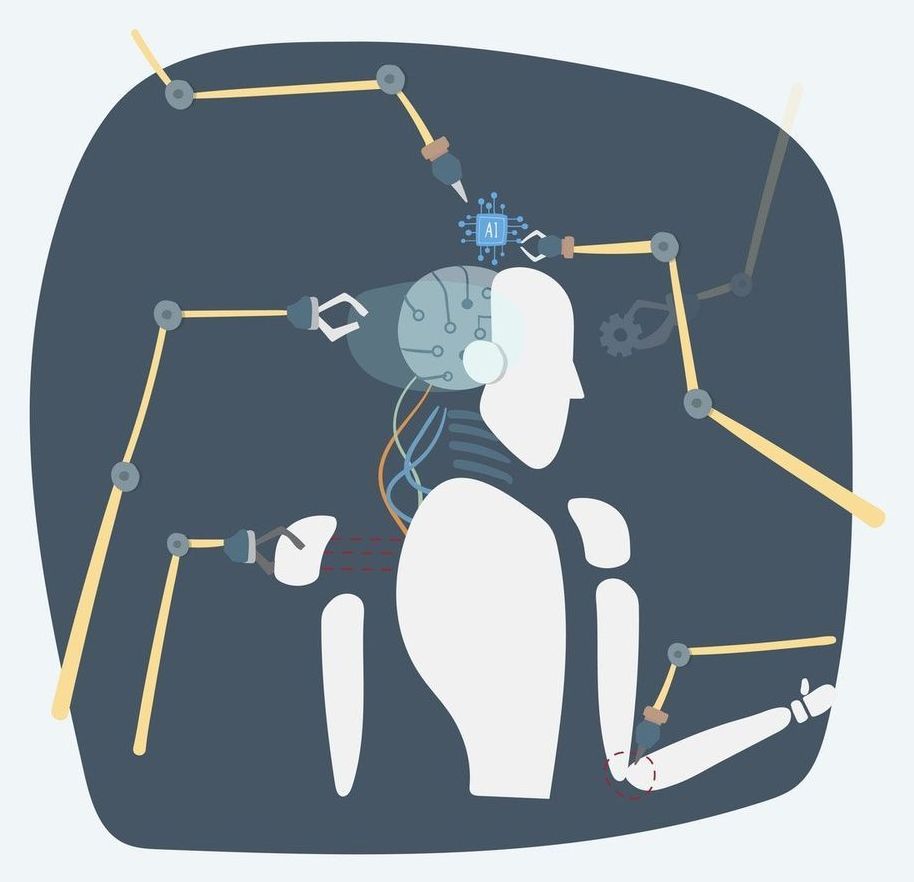
I am in shock… Google suddenly as yahoo are allowing conjecture and mendacity be seen as public or scientific opinion. Here is another confused mind who towards the end of her rant quotes Christian scripture as basis to stop Life extension-Transhumanism???
When I say to these minds Behold the leader of Christianity stood for Life abundant-Super Longevity and I can prove such. No matter what lost evangelist or preacher tells you Jesus was a medical researcher of extraordinary magnitude…
NOW BEHOLD THE LOST in this article… https://www.rodofironministries.com/…/transhumanism-and-imm… Respect r.p.berry & AEWR wherein aging now ends we have found the many causes of aging and we have located an expensive cure. We search for partners-investors to now join us in agings end… gerevivify.blogspot.com/
Whether we like it or not, the hybrid age is already here. From genetic manipulation, to AI technology, to nano-technology, robotics, 3D printing, brain mapping, super computing, the list is literally endless. Futurists and Transhumanist philosophers believe that science and technology are limitless, and that humanity’s current cultural traditions and mindset are the mechanisms in place that prohibit human development.
Mankind has experienced formidable technological growth in the past from the early ancestors to the Agrarian Age, the Industrial Age in the 18th century, and the Information Age in the 1970s, from their point of view, we are simply going through another revolutionary leap into what they call, the Hybrid Age.
The Transhumanist Movement, also known as H+ is an intellectual, cultural and political movement that supports technological enhancements in the human body through the use of genetics, robotics, synthetic biology, AI technology among others to modify the physiology, psyche, memory and progeny of a human being and ultimately achieve immortality on earth, (a procedure they believe can be reached within the next decade) whereby human consciousness can be uploaded into a robot, cyborg or possibly, a human clone. The sci-fi novel “Altered Carbon” by Richard K. Morgan captures a cornucopia of technological concepts that are, believe it or not, in experimental stages across the globe, methods such as: human hybridization, CRISPR-technology—Chinese scientists have used CRISPR for gene-editing on 86 human patients; limb regeneration, bionic augmentation, the making of super-soldiers, cloning, Cryonics and the growing interest in information-theoretic death, neuropreservation, suspended animation, molecular nano-technology and so on. Sounds far-fetched right?
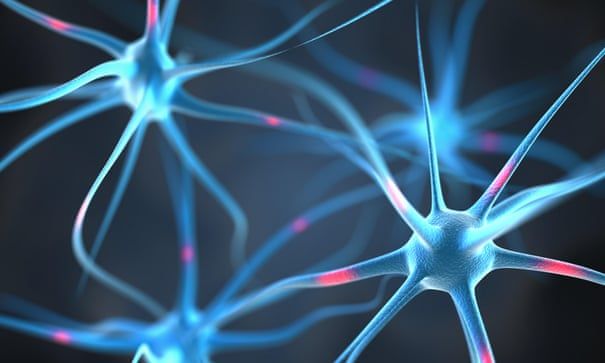
Scientists say creation could be used to circumvent nerve damage and help paralysed people regain movement.
Ian Sample Science editor.
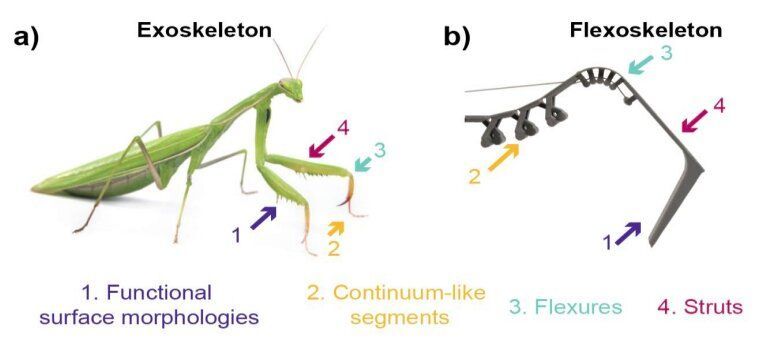
Insects typically have a variety of complex exoskeleton structures, which support them in their movements and everyday activities. Fabricating artificial exoskeletons for insect-inspired robots that match the complexity of these naturally-occurring structures is a key challenge in the field of robotics.
Although researchers have proposed several fabrication processes and techniques to produce exoskeletons for insect-inspired robots, many of these methods are extremely complex or rely on expensive equipment and materials. This makes them unfeasible and difficult to apply on a wider scale.
With this in mind, researchers at the University of California in San Diego have recently developed a new process to design and fabricate components for insect-inspired robots with exoskeleton structures. They introduced this process, called flexoskeleton printing, in a paper prepublished on arXiv.
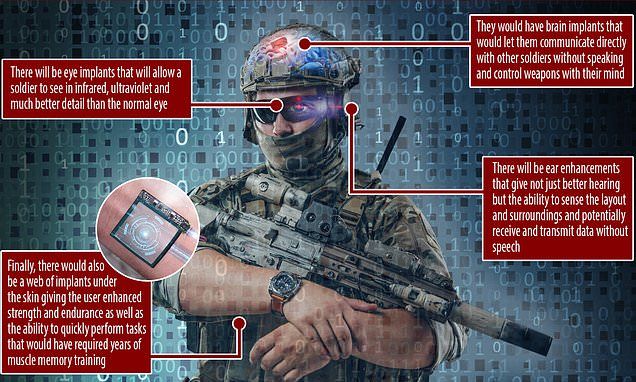
Future armies could be made up of half-human half-machine cyborgs with infrared sight, ultrasonic hearing and super strength, equipped with mind-controlled weapons.
In a US Army report, experts from Devcom — the Combat Capabilities Development Command — outlined a number of possible future technologies that could be used to enhance soldiers on the battlefield by 2050.

[Editor’s Note: Mad Science Laboratory is pleased to excerpt below the Executive Summary from a DoD Biotechnologies for Health and Human Performance Council (BHPC) study group report entitled, Cyborg Soldier 2050: Human/Machine Fusion and the Implications for the Future of the DOD. This report, authored by Peter Emanuel, Scott Walper, Diane DiEuliis, Natalie Klein, James B. Petro, and James Giordano (proclaimed Mad Scientist); and published by the U.S. Army Combat Capabilities Development Command Chemical Biological Center (CCDC CBC), culminates a year-long assessment to forecast and evaluate the military implications of machines that are physically integrated with the human body to augment and enhance human performance over the next 30 years. This report summarizes this assessment and findings; identifies four potential military-use cases for new technologies in this area; and makes seven recommendations on how the U.S. should proceed regarding human/machine enhancement technologies. Enjoy!]
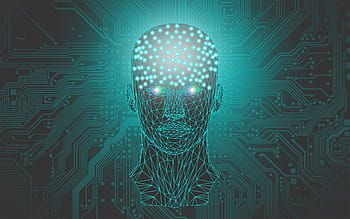
A DoD BHPC study group surveyed a wide range of current and emerging technologies relevant to assisting and augmenting human performance in many domains. The team used this information to develop a series of vignettes as case studies for discussion and analysis including feasibility; military application; and ethical, legal, and social implication (ELSI) considerations.
Ultimately, the team selected four vignettes as being technically feasible by 2050 or earlier. The following vignettes are relevant to military needs and offer capabilities beyond current military systems:

When you hear the word “cyborg,” scenes from the 1980s films RoboCop or The Terminator might spring to mind. But the futuristic characters made famous in those films may no longer be mere science fiction. We are at the advent of an era where digital technology and artificial intelligence are moving more deeply into our human biological sphere. Humans are already able to control a robotic arm with their minds. Cyborgs —humans whose skills and abilities exceed those of others because of electrical or mechanical elements built into the body —are already among us.
But innovators are pushing the human-machine boundary even further. While prosthetic limbs are tied in with a person’s nervous system, future blends of biology and technology may be seen in computers that are wired into our brains.
Our ability to technologically enhance our physical capabilities—the “hardware” of our human systems, you could say—will likely reshape our social world. Will these changes bring new forms of dominance and exploitation? Will unaltered humans be subjected to a permanent underclass or left behind altogether? And what will it mean to be human—or will some of us be more than human?

I have a four-foot-tall robot in my house that plays with my kids. Its name is Jethro.
Both my daughters, aged 5 and 9, are so enamored with Jethro that they have each asked to marry it. For fun, my wife and I put on mock weddings. Despite the robot being mainly for entertainment, its very basic artificial intelligence can perform thousands of functions, including dance and teach karate, which my kids love.
The most important thing Jethro has taught my kids is that it’s totally normal to have a walking, talking machine around the house that you can hang out with whenever you want to.